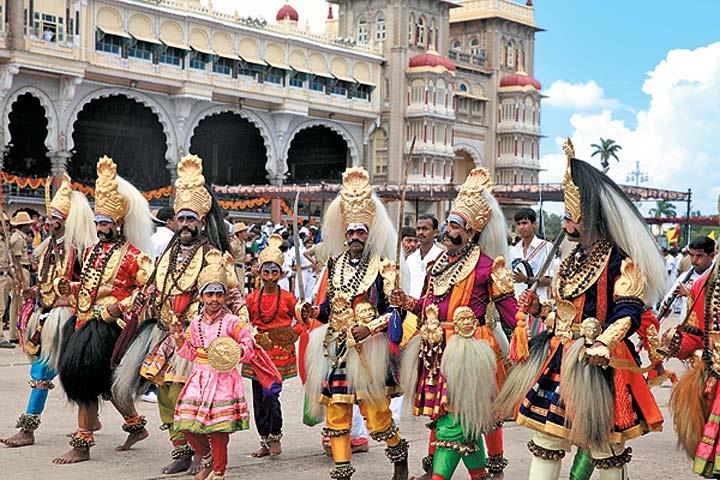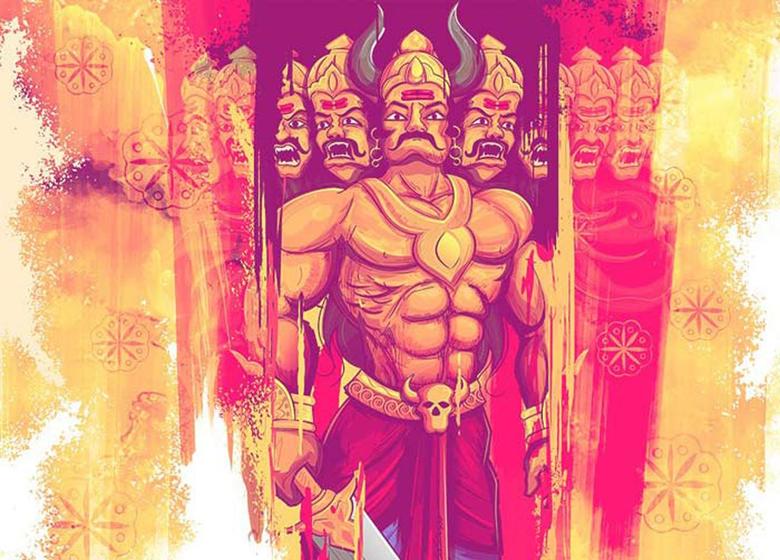Usually in India, the second half of the year is full of festivals and celebrations. With so many held in the span of weeks. It’s a great time for families as, in many parts of the world, they move together in unity to enjoy the festive season. Essentially every festival–Navratri, Dussehra, and Diwali –marks the supremacy of good over evil. It is a great time to teach children about India’s history. If you have a kid in your family, it’s a good time to teach them about these festivals. And give some facts about Dussehra to the kids to better appreciate the importance of the festival.
What is Dussehra?
Dussehra is a festival celebrated predominantly across the North, in memory of the glorious success of Lord Ram over Raavan. It is the final day of the Navratri festival and begins with many effigies of the ten-headed Raavan burning down to the ground.
Why and When Dussehra Is Celebrated?
Dussehra is usually held about mid-October (nearly at the end of the month) and marks Navaratri’s tenth day. It is celebrated to remember the triumph of Lord Ram over Raavan after his wife Sita, was kidnapped The two armies fought hard for days until Lord Ram victoriously killed Raavan and spared his wife from the clutches of evil For kids to learn and remember, it’s a great piece of Dussehra information.

Significance And Origin Of The Name
The festival honors two wins, one over the evil king Ravana and one over the demon king Mahisasura by Lord Rama and the other by Goddess Durga. It is recognized as Vijayadashami and Dussehra. In the case of Dussehra, Dasha+hara or the defeat of the sun and Vijaya+ dashamai, the terms, both of which have Sanskrit origins, signify victory on the tenth day.
Celebrations Of Dussehra In Different Parts Of India
South India
In different parts of the country, the festival is celebrated in various ways. For example, the festival is celebrated in various ways only in the Southern part of India. The day is celebrated by expressing gratitude for all that gives life success.
They are worshiping the goddess, Chamundeshwari. It’s celebrated as Golu in Tamil Nadu. The idols are set to create different settings that reflect their heritage and culture.
The story goes as though since the goddess Durga required tremendous power, all other gods and goddesses passed their energy to her and they were all standing like statues. The festival is also held to honor these deities ‘ self-sacrifice. Golu is ending on Dusshera.
North India
While in northern parts of India— Kashmir, Himachal Pradesh, Uttar Pradesh, Haryana, Punjab, Uttarakhand, and western Bihar— it is customary on the first day of Navratri to plant barley seeds in earthen pots.
The sprouts are used as luck symbols on Dusshera’s day. Men put them in the caps or in the ears Most Ramayana-based plays were performed during these 10 days, called Ramleela.
Ravana, Kumbhakarna and Meghanad’s effigies were burned at night. North India is also thought to have taken along a lot of infection since the start of winters, the burning of effigies, packed with phosphorus-containing firecrackers, supposedly purifies the atmosphere

How To Celebrate Dussehra At Home?
As the main Hindu festival, Dussehra is being celebrated in all parts of the world with great enthusiasm. This festival can be celebrated with your family at home too. To celebrate Dussehra at home, here are some tips:
- Dress your children up as different Ramayana characters and train them to perform the famous Ramayana scenes.
• Teach your children about the legendary king Rama. - Tell them that the festival of Dussehra celebrates the triumph of good over evil.
- Take your kids to the local fairs / melas to watch the Ramlila.
- Buy them swords, Dhanush, gadda, multi-character masks, etc.
- Encourage kids to use their artistic abilities to create Dussehra crafts such as bow and arrow and related crafts.
- The life story of Lord Rama is highlighted by recitations and hymns.
- You can also take small images of Ravana (if available) from the markets and burn them in a nearby field.
So, enjoy the day at home with your child and take the chance to show them that the truth always wins.
Interesting Facts About Dussehra
- ‘ Dussehra ‘ is derived from the Sanskrit word ‘ Dasha-Hara ‘ which literally means ‘ The Sun Will Not Rise ‘ further clarifying that the sun would not rise before Ram kills Ravan
- Goddess Durga is the ‘ Shakti ‘ created by God Brahma, Vishnu and Mahesh to curb the forces and destroy the demon king Mahishasur.
- Durga destroyed the demon on the 10th day of the Shukla Paksha of the Hindu Lunar Calendar. And the triumph on that day is also referred to as Vijayadashmi.
- Ravan’s ten heads reflect a person’s ten bad qualities: lust – Kam Vasana, Rage – Krodh, Attachment – Moh, Greed – Lobh, Over Pride – Mad, Jealousy – Matsarya, Selfishness – Swarth, Injustice – Anyaay, Cruelty – Amanavta, Ego – Ahankar.
- Dussehra is also being celebrated in Nepal and Bangladesh besides India. Malaysia has an official holiday to celebrate a religious festival.
- It is assumed that Dussehra has been celebrated since the 17th century when the King of Mysore directed the government to celebrate it in full glory.
- The festival also marks the shift in agricultural crops.
- Farmers are now harvesting the Kharif crop and beginning the Rabi crop after Diwali. This marks the beginning of a nice and cooler climate after the monsoon.
- Goddess Durga is believed to visit her mother on Durga Puja’s day with her children, Ganesh and Kartik. And return to God Shiv on Dussehra
So, these are some of the facts about Dussehra.
Dussehra is heartfeltly celebrated throughout the country. While they have various forms, the main celebration is that of good over evil and the world’s triumph of balance.













